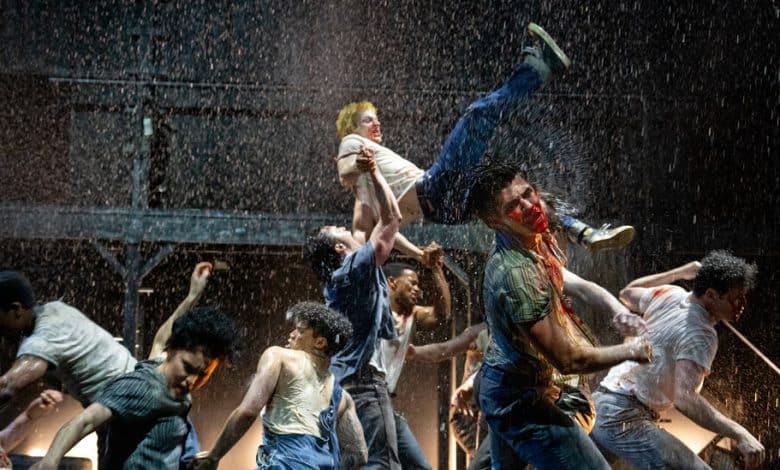Enhancing Broadway, by Any Bodily Means Necessary

In the Broadway musical adaptation of “The Outsiders,” something shocking keeps happening. It isn’t that the characters throw punches, or not exactly. These are teenagers who rumble, so it isn’t surprising that they’re violent. What’s shocking is the kinesthetic impact. You seem to feel the blows yourself.
The impact is electrifying, but it doesn’t operate alone. It serves the storytelling and engages the emotions of an audience by bodily means. This is what choreography at its best can do, and it isn’t limited to what you might think of as dancing.
The choreographers of “The Outsiders” and of the four other shows nominated for the Tony Award in that category this year understand this. None dole out the usual stuff. This broader vision of theatrical choreography is worth noticing and applauding.
Hell’s Kitchen
A loosely autobiographical jukebox musical of songs by Alicia Keys, “Hell’s Kitchen” takes place in the 1990s, in the Manhattan neighborhood of the title. Camille A. Brown’s choreography fits the setting. It looks, delightfully, like dancing that the people who live there would do, like regular folks getting their groove on.
But it’s also a throwback to an older, neglected mode of integrating dance into a musical, the tradition that Agnes de Mille inaugurated with shows like “Oklahoma!” and “Carousel” in the 1940s. Like de Mille, Brown individuates the ensemble with detail: This guy is extra flamboyant; that gal pops her gum bubbles on the beat. Moving like this, the dancing chorus becomes the appealing community that draws the show’s 17-year-old protagonist, Ali, into the world — and out from the apartment building where her mother wants her to stay sheltered.